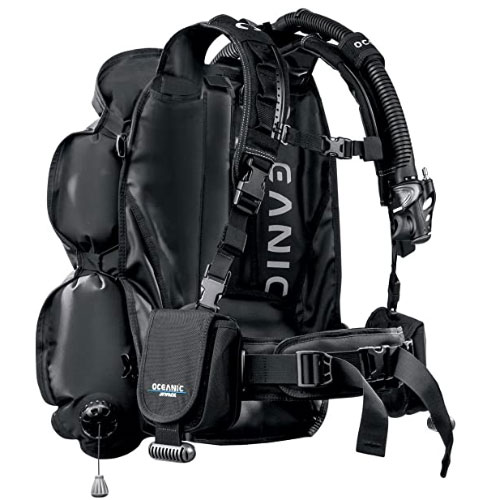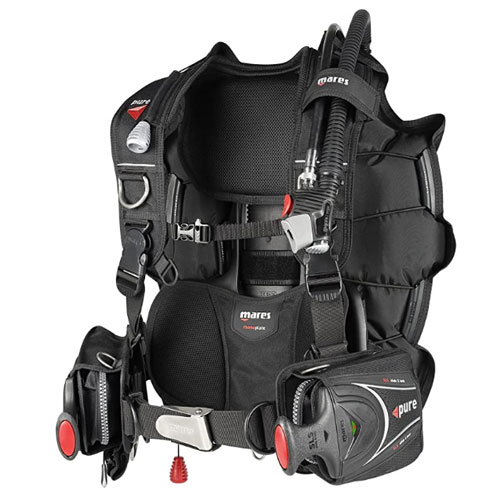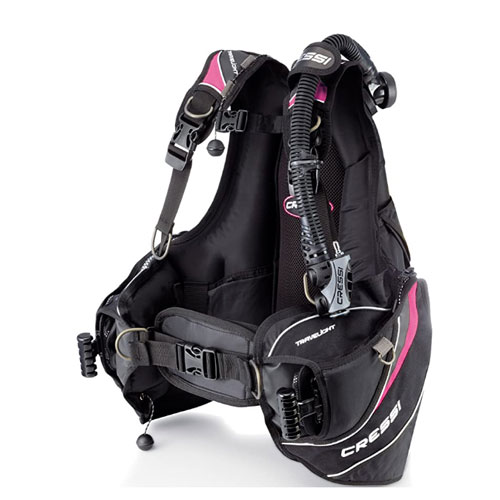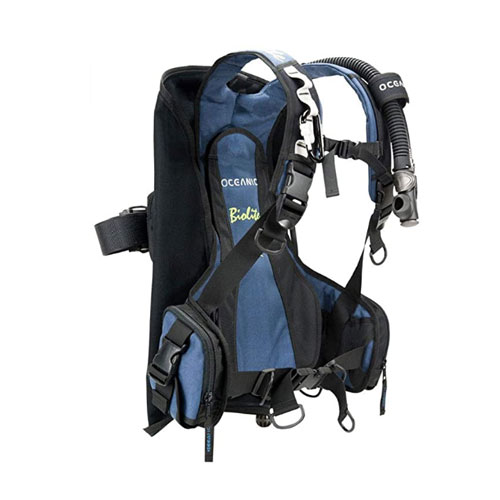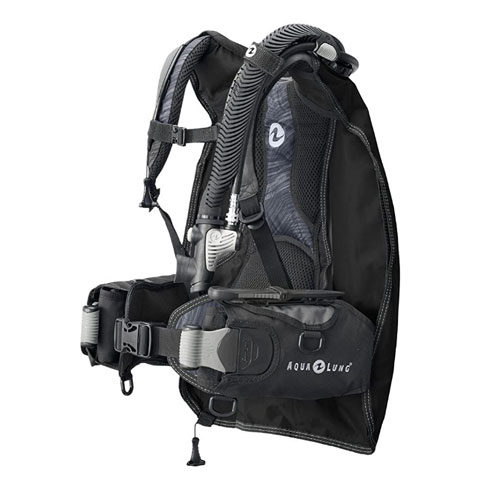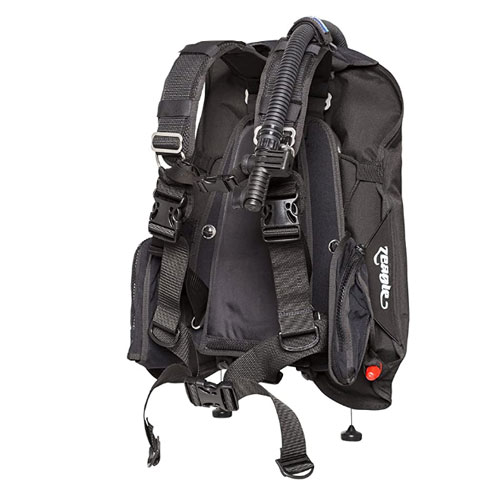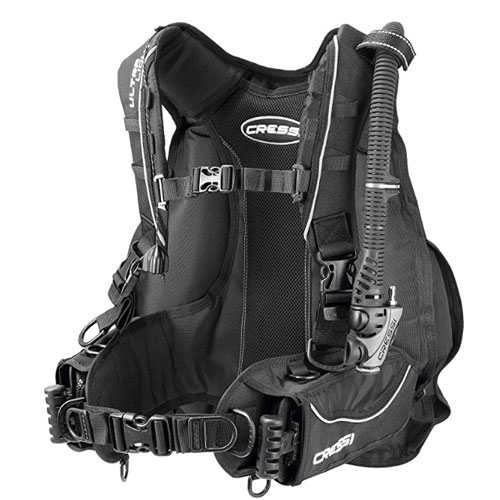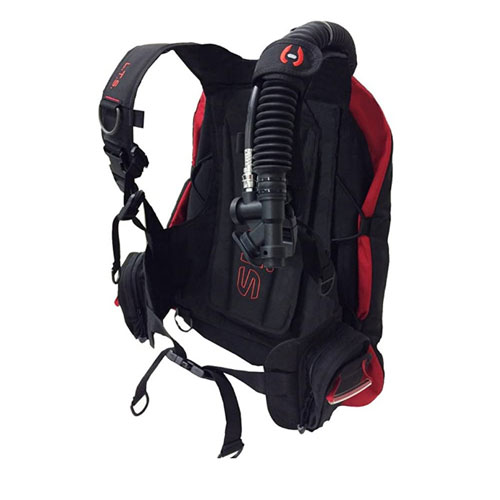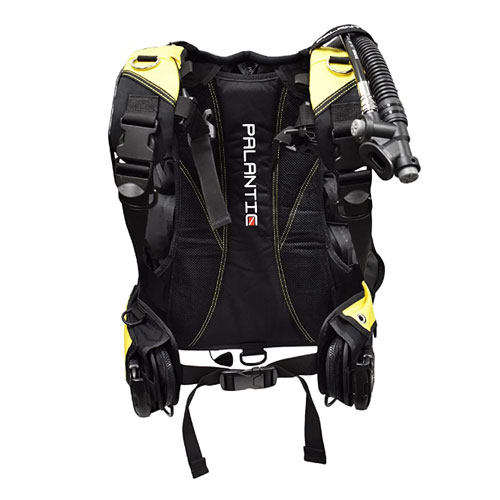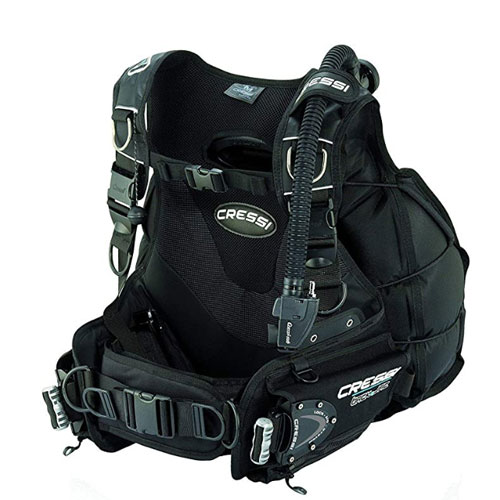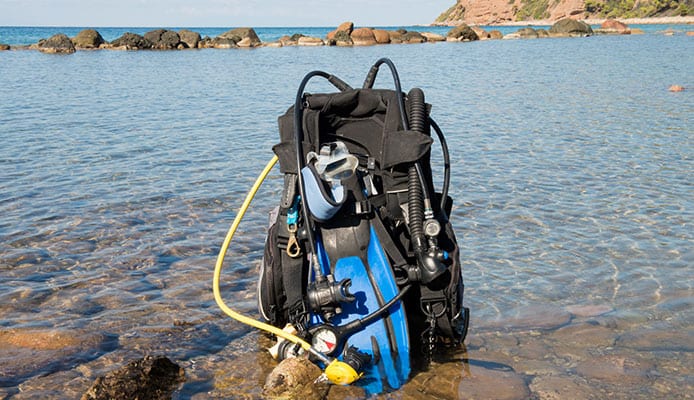
Buying a BCD (buoyancy compensator device or buoyancy control device) is likely the most confusing purchase for a new diver. While helping you control your buoyancy is its primary function, there are others. It provides a means to secure the scuba tank, allows you to float on the surface, and allows you to stow some items you may wish to have with you on your dive. How and where you dive will drive some features you will like as a part of your BCD.
One factor that is fairly new in the scuba diving industry is airline baggage policies. Underwater the weight of a BCD is nearly nothing. Weight and size are not a big factor in boat dives, and from shore dives you just get it done. However, size and weight do matter when packing for a trip when you are flying. Size restrictions and extra surcharges for heavy cases created the need for the travel BCD.
OUR TOP PICK
Oceanic Jetpack Diving Travel BCD
- Stand Out Features - Why We Love It
- BCD and semi-dry backpack combination
- Lightweight: 8.25 lbs. total weight
- Carry on size
- The only bag you will need for a short dive trip
EDITORS CHOICE
Mares Pure SLS BC Vest
- Stand Out Features - Why We Love It
- The SLS weight system
- Above-average lift capacity
- Back-mounted air bladder
- Cargo pocket and “D” rings
BEST VALUE
Cressi Travelight BC BCD
- Stand Out Features - Why We Love It
- Folding back to reducing packing space.
- Two zippered pockets and eight “D” Rings for accessories.
- Integrated weight system with larger than average capacity.
- Front positioned rear relief valve control.
Oceanic Biolite Travel BCD
- Stand Out Features - Why We Love It
- Bioflex Air Bladder
- Weighs only 5.5 pounds
- Low profile backplate with lumbar support
- Ease of adjustments.
- Stand Out Features - Why We Love It
- Able to be rolled as well as folded for travel and storage.
- The Lightest Travel BCD at 4.4 pounds.
- No backplate
- Streamlined bladder
- Stand Out Features - Why We Love It
- A true Tech BCD
- Custom colors
- Includes twin tank bands for individual tanks
- Back inflation style
Cressi Ultralight BCD
- Stand Out Features - Why We Love It
- Fully adjustable
- Cressi's Streamline Commando Power Inflator
- Budget price
- low weight
Hollis LTS Light Travel BCD
- Stand Out Features - Why We Love It
- Two-piece wing
- Weight integrated
- Hip position “D” rings
- Stand Out Features - Why We Love It
- Low cost
- Three-dump air deflation system
- Quick-release weight pockets
Cressi Air Travel BCD
- Stand Out Features - Why We Love It
- High lift capabilities
- Lock-Aid Integrated Weight Pockets
- Weighs around 5.5 lbs.
- Lightweight BCDs allow us to travel easily and efficiently while avoiding extra baggage fees from transport companies. Minimalist BCDs such as the Aqualung Rogue can be deconstructed piece-by-piece to separate your gear into separate bags when necessary.
- BCDs constructed with aluminum rings allow you to load more weight onto them without risking their durability over time.
- Pockets are crucial for any BCD, but a travel BCD should have strategically placed pockets that allow for maximum functionality while still conserving space.
- Using backplate, or “wing,” BCDs is a great way to customize your equipment's fit and design. Many wing BCDs have individual parts that can be ordered in custom sizes to better fit the diver.
![]()
Scuba Diving Expert
How To Choose A Travel BCD – Buying Guide
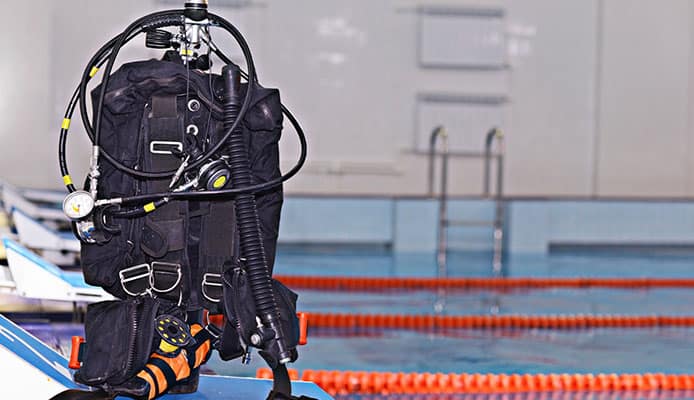
Weight
A travel BCD means you are making a trade-off somewhere. When compared to a standard BCD, it will have fewer features or few attachments. Having a lightweight BCD is very important for a diver that travels by air frequently. If you do not, then maybe you should compare a travel BCD with a standard one.
Fit
Having your travel scuba gear fit you well isn’t just a matter of comfort; it’s also a matter of safety. A BCD should be loose enough to allow full movement, especially in the chest. One that is too tight can cause problems with your breathing at depth. On the other hand, a BCD that is too big will float up, causing problems with your buoyancy.
Pockets and attachment points
When you dive, you need your tools with you. However, pockets and attachment points are often the first thing to be removed to lower weight. When selecting a travel BCD, consider the items you normally have on or in your BCD and ensure you have space for it on the travel BCD.
You might also like: Best Dive Slates
Style
As always, style is a matter of personal taste when it comes to colors and the like. Just choose what you like best and feel great when wearing it. But there’s another matter of style for travel scuba gear, one that requires more attention.
As you’ve noticed from our list of the best travel BCD options above, some models are jacket-style and some are back inflation-style. Choosing between the two will have a great impact on your future diving experiences. For more movement freedom and a less bulky feel, go for the jacket style. For greater lumbar support and more carry capacity, go for the back inflation style.
Lift Capacity
This is the amount of negative buoyancy that a BCD can overcome.
FAQs
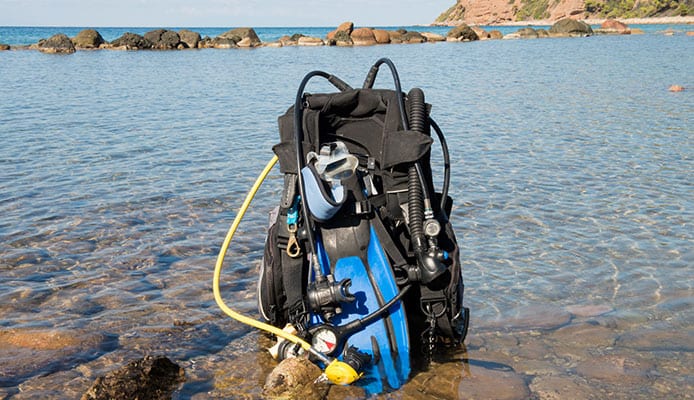
Q: What Is The Best Way To Use Travel BCD?
You use a travel BCD in the same way as you would a standard BCD. Your biggest difference in use will likely be how many items you can attach.
Q: What Are The Benefits Of Using A Travel BCD?
The most immediate benefit is the lightness that makes a travel BCD far more portable compared to a regular one, as well as a reduced storage space needed.
Q: Can I Use A Travel BCD For Everyday Use?
Yes, a travel BCD will stand up to the same use as a standard BCD
Q: How Deep Can You Go With A Travel BCD?
The maximum depth for a recreational diver certified as a deep diver is 130 feet. All BCD can operate beyond that depth.
Q: How To Maintain Travel BCD?
There is no difference in maintaining a travel BCD. Make sure you clean it at the end of each diving day.
Globo Surf Overview
We hope our travel BCD reviews helped you pick your best fit and that you’re now one step closer to the scuba vacation of your dreams. Picking a travel BCD is no different than selecting a standard BCD except that it is lighter. You want it to fit properly, you should be comfortable in it, the dump valves in a position you can reach, in a style you are comfortable with and it has the features you need.
More Scuba Reviews:
- BCD
- Dry Suit
- Scuba Fins For Travel
- Air Integrated Dive Computer
- Scuba Mask With Purge Valve
- Dive Boots
- Dive Compass
- Freediving Fins
- Freediving Watch
- Scuba Tank
What kind of buoyancy compensators have you used so far? Are you loyal to a particular brand or do you look strictly to features when shopping for a new BCD? What would you advise a beginner looking to buy his or her first BC scuba diving equipment?



